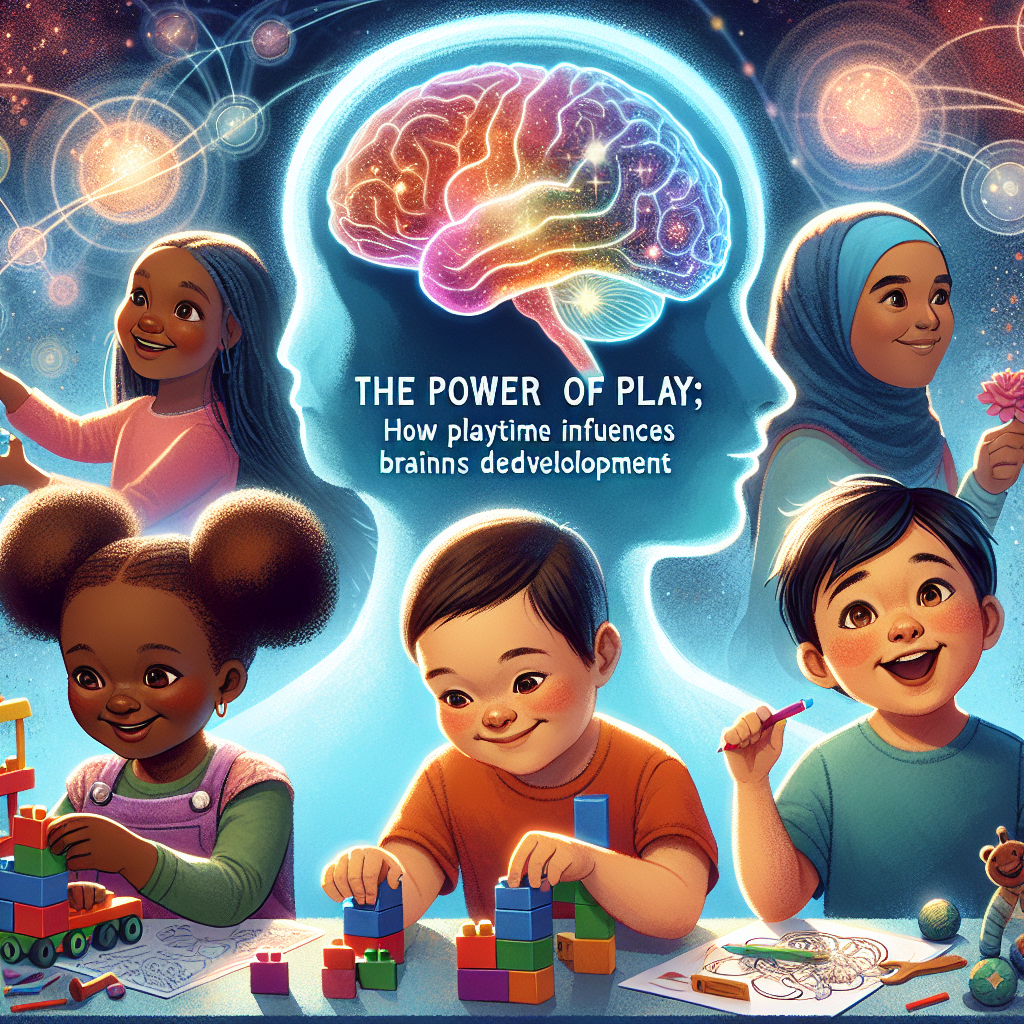Introduction
Imagine a world where children learn, grow, and thrive through the joyful act of play. The notion that play is essential for development isn’t just a comforting thought; it is backed by compelling research. The Power of Play: How Playtime Influences Brain Development illustrates the significance of playful experiences in shaping young minds. In this comprehensive exploration, we’ll delve into the multifaceted relationship between play and cognitive growth, offering insights that are not just informative but transformative.
The Science Behind Play: Why It Matters
Understanding Brain Development
The human brain undergoes profound transformations, especially during the early years of life. According to neuroscientific studies, approximately 90% of brain growth occurs by age five. This period is characterized by neural connections forming at an astonishing rate—about 700 new connections every second.
Key Takeaway: Engaging in various play types—be it imaginative, physical, or social—stimulates differently situated areas of the brain, fostering overall cognitive development.
Neuroplasticity: Play as a Catalyst
Neuroplasticity—the brain’s ability to reorganize and adapt—plays a crucial role in how children learn. When children engage in play, they not only develop new skills but also strengthen existing neural pathways. Research indicates that playtime encourages risk-taking, problem-solving, and creative thinking—all critical skills for lifelong learning.
The Role of Play in Emotional Regulation
Play is not just about cognitive skills; it also has profound emotional implications. Engaging in playful activities aids in emotional regulation, allowing children to experience a range of feelings in a safe environment. This emotional flexibility contributes to resilience, empathy, and the ability to cope with stress.
Types of Play and Their Unique Benefits
1. Unstructured Play: Fueling Creativity
Unstructured play is spontaneous and self-directed, allowing children to invent their games. This form of play has been linked to enhanced creativity and problem-solving skills. Case Study: A school in Finland implemented a free play policy during recess. The results showed a significant increase in student creativity and collaboration in classroom projects.
| Benefits of Unstructured Play | Examples |
|---|---|
| Enhances creativity | Building forts from cushions |
| Improves problem-solving skills | Organizing a scavenger hunt |
| Fosters social skills | Group games like tag |
2. Structured Play: Learning Through Rules
Structured play, where rules are set, promotes teamwork and discipline. Games like soccer or board games teach children about cooperation, competition, and strategic thinking.
Case Study: In a study involving children from diverse backgrounds, participation in team sports led to improved academic performance and self-esteem.
3. Sensory Play: Engaging the Senses
Sensory play engages children through tactile experiences, enhancing brain development. Activities like playing with sand, water, or clay stimulate sensory pathways, fostering cognitive growth.
Case Study: A daycare that incorporated sensory play into their curriculum reported better concentration levels and creativity among its children.
4. Digital Play: Navigating the Modern Landscape
In today’s digital age, screen time can also be a form of play. Educational games and apps can enhance learning, but moderation is key. Balancing digital play with physical and social activities is vital for holistic development.
The Power of Play: Implementing Strategies for Parents and Educators
Creating a Play-Friendly Environment
-
Designate Play Zones: Reserve areas in homes or classrooms where play is encouraged and accessible.
- Limit Screen Time: Advocate for a balanced approach to technology, promoting more hands-on activities.
Encouraging Play at Home
- Family Game Nights: Incorporate games that require teamwork and strategy.
- Outdoor Adventures: Take walks, go on scavenger hunts, or simply explore nature.
Integrating Play into Education
Educators can weave play into the curriculum to enhance engagement:
- Role-Playing Exercises: This approach helps students explore different perspectives and enhances empathy.
- Project-Based Learning: Encourage students to engage in projects that require creative problem-solving and teamwork.
Conclusion
The essence of The Power of Play: How Playtime Influences Brain Development is not just about leisure; it is a vital component of holistic growth in children. Play ignites creativity, sharpens problem-solving skills, and builds emotional resilience. For parents, educators, and caregivers, fostering an environment where play is prioritized is essential for nurturing the next generation.
FAQs
1. How much playtime should children have each day?
Experts recommend at least 1-2 hours of unstructured playtime daily for children.
2. Can play actually improve academic performance?
Yes, studies show that children who engage in play tend to have better focus and academic outcomes.
3. What types of play are most beneficial for development?
A mix of unstructured, structured, sensory, and digital play can provide balanced benefits.
4. Is screen time considered play?
Digital play can be beneficial when used in moderation and combined with other forms of play.
5. How can I encourage my child’s creativity through play?
Provide open-ended materials and opportunities for imaginative play, like art supplies and outdoor exploration.
By understanding and harnessing The Power of Play: How Playtime Influences Brain Development, we empower children to thrive in every aspect of their lives. Let’s commit to making play a priority for our future generations!

